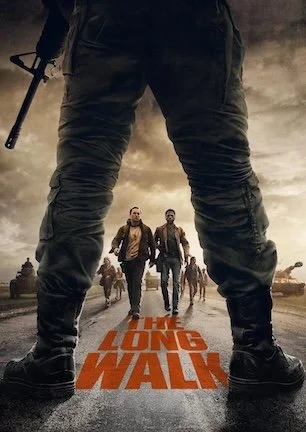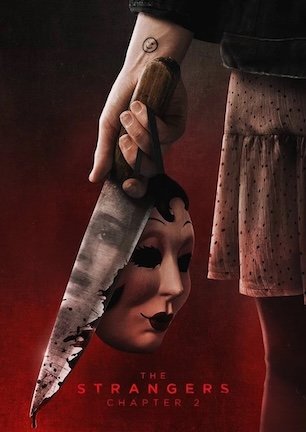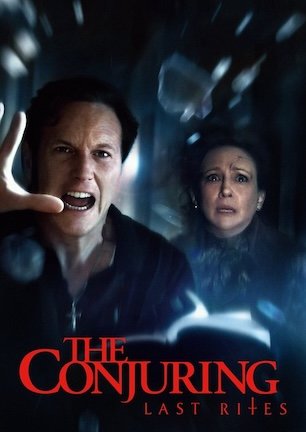Studio: Lionsgate
Director: Michael J. Bassett
Writer: Michael J. Bassett
Producer: Samuel Hadida, Don Carmody
Stars: Adelaide Clemens, Kit Harington, Deborah Kara Unger, Martin Donovan, Malcolm McDowell, Carrie-Anne Moss, Sean Bean
Review Score:
Summary:
After discovering her true identity, Heather Mason must confront the evil consuming the town of Silent Hill in order to save her kidnapped father.
Review:
“Silent Hill – Revelation” does not improve upon the original film, but it does improve it. What I mean is, the first “Silent Hill” film (review here) was flawed, but I appreciate it more now after seeing what a truly off mark interpretation of Silent Hill is really like.
Michelle Williams doppelganger Adelaide Clemens plays Heather Mason and Sean Bean is her father Harry. In actuality, they are Sharon and Christopher from the first film, now on the run from the Silent Hill cult and living under assumed names. When her father is taken captive, Heather has to return to Silent Hill and recover the memories of her past in order to save her family.
The key strength of the first film, and of the video game series the movies are based on, is mood. Silent Hill is at its most unsettling when the atmosphere is as thick as the fog blanketing the town. Perhaps taking the criticism of the previous film being overlong a little too seriously, “Revelation” makes its mistake by focusing more on action than on mood. The version of Silent Hill created this time around suffers as a result.
Apparently there was a mandate that no peripheral character was to have more than three minutes of screen time. With a stopwatch in hand and rounding up to be generous, I did a small bit of math to satisfy that theory. Martin Donovan’s detective character came in at around three minutes of total screen time, give or take a few seconds. Reprising her role as Dahlia, Deborah Kara Unger’s singular scene was three minutes, some of which was flashback footage. Malcolm McDowell? Three minutes nearly on the nose. Carrie-Anne Moss threw off the curve by extending her scenes to three minutes and 40 seconds. Since she is the film’s primary antagonist, I suppose this exception is warranted. To be fair, at least two of those actors play characters that turn into monsters, so it could be argued that I am shortchanging the length of their appearances.
More ridiculous are the blink-and-you’ll-miss-them appearances of several other characters. At one point, Heather rescues a girl from demonic mannequins in a Silent Hill warehouse. I was extremely grieved when she later died, as I had an entire one minute and 40 seconds to become attached to her. And as Heather’s mother, Radha Mitchell could apparently be bothered to return for the sequel and contribute a full 50 seconds.
A fair portion of the screen time is given over to the monsters. Patrick Tatopoulos and his shop have turned out exceptional creature designs in other films, but these particular monsters are out of place in the world of Silent Hill. The main creature looks as though she were a cenobite that accidentally wandered over from the set of the latest Hellraiser movie. She has a clean symmetry to her appearance that fails to capture the grotesqueness of Silent Hill’s usual body horror deformities.
CD cenobite (Hellraiser III) + Chatterer cenobite (Hellraiser) = Silent Hill - Revelation's Missionary?
Equally out of place is the CGI animated spider made out of plastic mannequin parts. Although the plastic parts resemble limbs, this may be the first Silent Hill creature to not be one of those deformed humanoids mentioned in the previous paragraph. The stilted walking and jittery movements of nurses and lurkers are replaced with sleek motions and fluid animation. The spider-thing moves like General Grievous from The Phantom Menace when it should shamble in that distinctive Silent Hill style. It is just one more piece that misses out on emulating the brand’s distinct nature of psychological horror.
Costuming the heroine in a puffy white vest does not make her the familiar character known from the game. Indeed, “Revelation” has a connection to Silent Hill that is as superficial as the dye Heather uses to turn her hair blonde. A truck driver passing through Silent Hill in the final scene is named Travis Grady. “Revelation” is throwing out a reference to the protagonist of “Silent Hill: Origins” while throwing away the fact that Silent Hill has been closed to through traffic since the underground coal fire began burning. A prison bus driving in the opposite direction is a similar hat tip to “Silent Hill: Downpour.” For a closed off town missing large sections of road, Silent Hill certainly sees a fair share of vehicles.
Name-dropped references that only game fans recognize are not where Silent Hill’s essence lies. A large part of that essence comes from Akira Yamaoka’s musical score, which is as synonymous with the series as is Pyramid Head. Although chief Yamaoka cues used in the first film reappear in “Revelation,” they are supplemented with more Jeff Danna orchestration this time around. While it fits the action-oriented tilt, such as in the climactic battle sequence, it is noticeably opposed to Yamaoka’s hauntingly eerie tones. The soundtrack accents the action without seeping into the psyche, where Silent Hill truly resides.
Stripped of any relation to what fans know of Silent Hill, “Revelation” is still unable to hold its own as an interesting horror story. In a needless addition to the cursed town’s already haunted history, it is revealed that Silent Hill was built on Native American land. (Isn’t all of America built on Native American land?) Kit Harington’s character quickly quips about how one should “never build on ancient Indian burial grounds,” but acknowledging the cliché with a line of dialogue does not make it any less tired a concept.
Somewhere, someone went down a checklist of things people find frightening and piled them all into “Silent Hill – Revelation.” Creepy clowns at a birthday party. Creepy mannequins in an abandoned storeroom. Creepy gas mask-wearing cult members in a creepy amusement park. That last one does come from Silent Hill. Whether or not anything else fits seems irrelevant.
Original “Silent Hill” director Christophe Gans showed a genuine understanding and respect for the elements that originally made the game a success with fans, even if parts of his execution were misfires. “Revelation” director Michael J. Bassett provides fan service mainly through winks and nods as cursory as the forgettable characters. “Silent Hill – Revelation” is a film that chooses its inspirational cues from an assortment of tropes more random than the plot advancements. The end result is a bland story and an inferior vision of a cursed town that is becoming less terrifying each time it is visited.
Review Score: 35






Although it leaps off a compelling springboard, “The Carpenter’s Son” lands in a shallow pool in search of more commanding material.